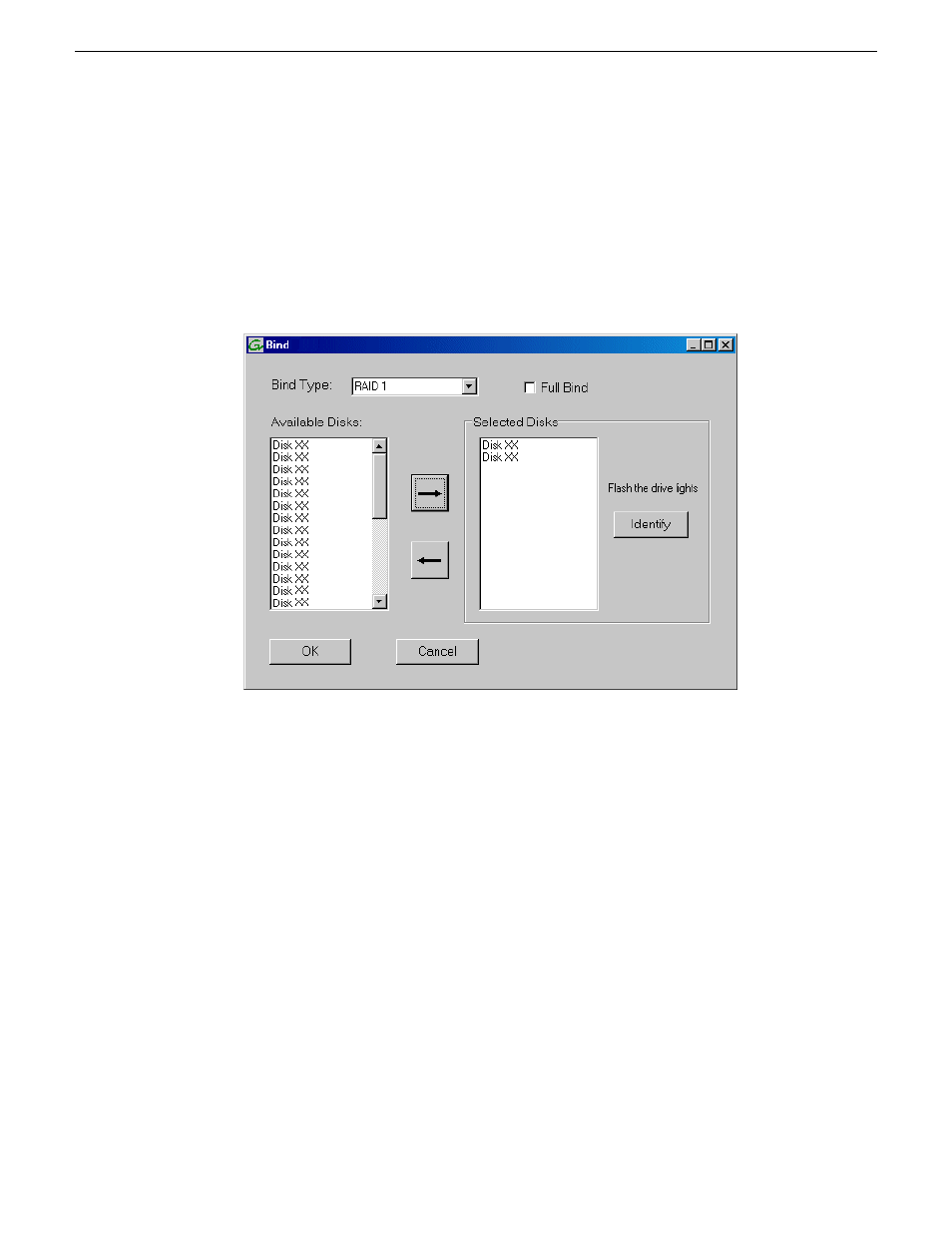Grass Valley K2 Summit Storage Area Network Installation User Manual
Page 164

4. For systems that use RAID 1 RANKs, you must now create the separate RAID 1 storage for
metadata files and journal files. To bind unbound disks for metadata and journal storage, do the
following:
a) Right-click the
Unbound
node for the controller, then select Bind in the context menu. (If the
RAID chassis has two controllers, both controllers are represented by the single “Controller”
node)
The Bind dialog box opens showing all unbound disks for the controller listed in the Available
Disk list.
b) Leave
Full Bind
unchecked.
c) In the
Bind Type
drop down box, select
RAID 1
.
d) In the Available Disks box, select two contiguous disks at the top of the list. These should be
the first two disks in the primary RAID chassis. (TIP: Use ‘shift-click’ or ‘control-click’ to
select disks.) This creates a RAID 1 RANK for metadata storage.
e) Click the add (arrow) button to add disks to the Selected Disks list.
NOTE: As an aid in identifying a disk module’s physical location, select it in the Selected
Disks list, then click Identify Disks. This causes the disk drive light to flash.
f) Click
OK
to close the Bind dialog box and begin the binding process. The Progress Report
dialog box opens, showing the status of the binding process.
g) Close the Progress Report and repeat the previous steps, selecting two more contiguous disks
to create another RAID 1 RANK for journal storage. These should be the next two disks in
the primary RAID chassis.
h) Make the fifth disk in the primary RAID chassis a Hot Spare. In the
Bind Type
drop down
box, select
Hot Spare
.
i) In the Available Disks box, select the fifth disk in the primary RAID chassis.
j) Click the add (arrow) button to add the disk to the Selected Disks list.
k) Click
OK
to close the dialog box and begin the binding process.
164
K2 SAN Installation and Service Manual
18 November 2010
Configuring and licensing the K2 SAN
